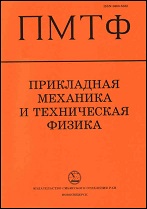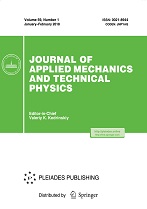|
This article is cited in 4 scientific papers (total in 4 papers)
Strength properties of vessels of the abdominal aorta: experimental results and perspectives
A. I. Lipovkaa, A. A. Karpenkoab, A. P. Chupakhina, D. V. Parshina
a Novosibirsk National Research State University, 630090, Novosibirsk, Russia
b Meshalkin National Medical Research Center, 630055, Novosibirsk, Russia
Abstract:
Aorta is the largest vessel of the human circulatory system, which plays a critical role in the supply of oxygen and nutrients tp all organs of the abdominal cavity and lower limbs. The critical pathology of this vessel is aneurysm. In medical practice, an important problem is aortic aneurysm rupture prediction and surgery planning since aneurysm rupture outside the clinic, as a rule, leads to a lethal outcome. To construct adequate mathematical models that predict such an outcome, it is necessary to determine the strength characteristics of the tissues of the aorta itself, its aneurysm and iliac arteries at various stages of growth of such an aneurysm, and also taking into account patient data. The strength characteristics of tissues of the human aorta, its aneurysm, and iliac arteries have been studied. It has been experimentally proved that in samples of healthy aorta tissues, the differences between the values of the limiting relative deformations in the axial and tangential directions are statistically significant ($p = 0.033$), which is not observed in the case of an aortic aneurysm. The results can also be interpreted as the fact of remodeling of the aortic aneurysm wall in comparison with the healthy aorta. These data can be used in personalized hydroelastic simulation during construction of predictive models for the rupture of such aneurysms.
Keywords:
abdominal aortic aneurysm, uniaxial mechanical test, ultimate strength characteristics, biomechanics, hydroelasticity.
Received: 29.11.2021
Revised: 29.11.2021
Accepted: 29.11.2021
Citation:
A. I. Lipovka, A. A. Karpenko, A. P. Chupakhin, D. V. Parshin, “Strength properties of vessels of the abdominal aorta: experimental results and perspectives”, Prikl. Mekh. Tekh. Fiz., 63:2 (2022), 84–93; J. Appl. Mech. Tech. Phys., 63:2 (2022), 251–258
Linking options:
https://www.mathnet.ru/eng/pmtf32 https://www.mathnet.ru/eng/pmtf/v63/i2/p84
|


| Statistics & downloads: |
| Abstract page: | 105 | | References: | 30 | | First page: | 17 |
|





 Contact us:
Contact us: Terms of Use
Terms of Use
 Registration to the website
Registration to the website Logotypes
Logotypes









 Citation in format
Citation in format 
